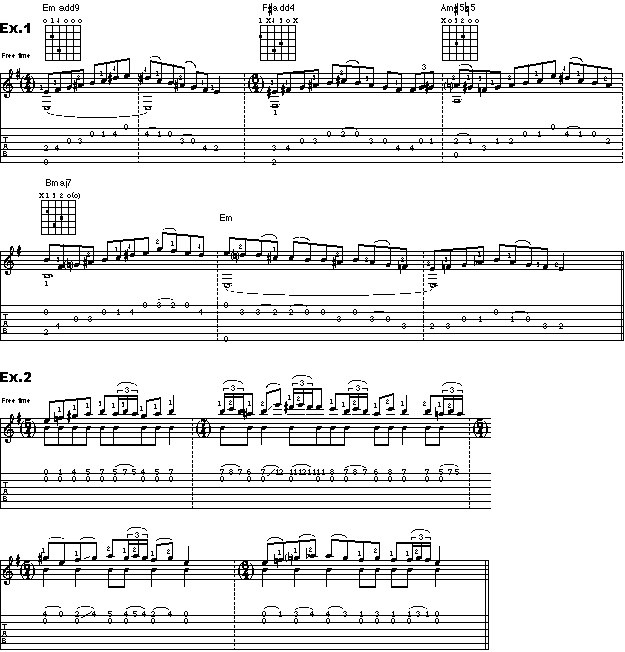So-called "Gypsy" scales
So-called "Gypsy" scales are
derived from Middle Eastern
modes. Harmonizing these modes
is an innovation of flamenco
guitarists. This results in some
interesting chord forms, a few of
which are shown in Ex. 1. The
sequence of modes follows an
oud style, and these phrases are
meant to have a free, improvisatory feel.
(The oud is a round-backed, fretless lute played in Africa and
the Middle East. It's mostly fingered in the first position and is
good for playing quarter-tones -- modal intervals that fall
between major and minor with a "sweet and sour" sound.)
Ex. 2 is a selection of modes played in the style of a
"long-necked" lute. Played from Morocco to India, these are
the oldest known fretted stringed instruments. This family
includes the bouzouki, saz, rebab, and sitar. They usually have
three or four courses of double strings; melodies are played
mainly on the top course, while the lower strings create
droning rhythms.
The shape of a long-necked lute's neck dictates that the scale
motion moves vertically up and down the string (as opposed
to across the fretboard, as on guitar). Approach these lines
with the same spirit as you would the blues.
In this example, the open-B string adds a drone quality. Note
the large stretches, and the way the first finger changes
fretting position to support the trills and embellishments. This
technique was explained to me by Yanaris Asemakis, who
plays excellent Greek bouzouki on my Guitar Bazaar CD.
Yanaris says he learned this style from a Gypsy violinist, so
there you are.
